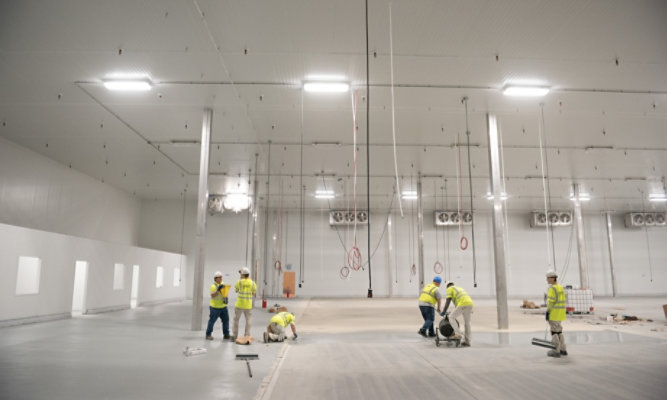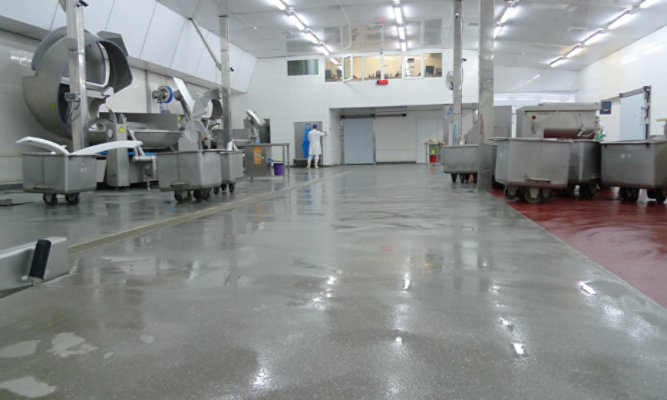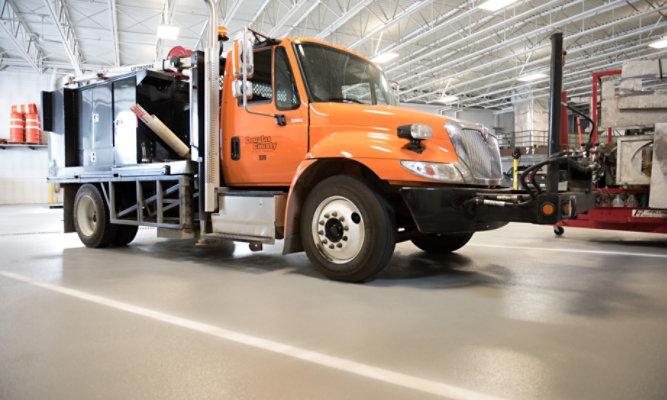Outgassing and Outgas Bubbles
This technical note aims to explain the effects of concrete porosity and increasing substrate temperatures on concrete outgassing. By applying the initial coating as the substrate temperature decreases, it is possible to minimize or eliminate outgassing and the formation of outgas bubbles
Learn More or Get a Free Flooring Evaluation

What is Outgassing?
All concrete has some level of entrained air or porosity. Per the Manual on Control of Air in Concrete, the target for concrete air entrainment ranges from 3% to 7.5% by volume, with air voids smaller than the head of a pin.1 In terms of gallons, this entrained air equates to approximately 11 to 28 gallons of airspace per 100 square feet for a slab six inches thick and does not represent the potential volume of airspace within porous concrete.
An increasing substrate temperature results in the air within the concrete seeking to escape in process referred to as outgassing.2 Outgassing occurs because both air and concrete volumes increase with increasing temperature, and any air within the concrete is forced out as both expand. The amount or volume of outgassing is significantly impacted by the concrete porosity as well as the magnitude of the temperature increase. When outgassing occurs during the initial cure, any air pushed through the coating forms an outgas bubble that is captured in the setting resin.2
What is an Outgas Bubble?
An outgas bubble is a term used to describe a type of visible surface defect found in the cured resinous coating after substrate outgassing. Outgas bubble appearance will vary depending on product composition, thickness, and the stage of cure that outgassing occurred, but typically present as small circles or tiny crater-like structures, often with a pin hole in the center of the circle or crater that may or may not be visible to the naked eye.
Eliminate Outgassing to Prevent Outgas Bubbles
In order to minimize outgassing and prevent the formation of outgas bubbles, any coating intended to seal the concrete should be applied when the substrate temperature is warmest and the slab temperature will be decreasing.2 This is because when the coating is applied to the substrate as the temperature is decreasing, the resins will be drawn into the slab sealing the pores and preventing outgas bubbles - even when this occurs late in the coating cure process.
Prior to application, it is important to consider and monitor any sources of heat such as direct sunlight on the concrete; sunlight warming the airspace of an un-insulated building or garage, even heaters cycling on and off can potentially warm the substrate enough to create an outgassing event when resins are setting up.
Please contact the High Performance Flooring Technical Team with any questions or concerns.
References:
1. Whiting, D. A. and Nagi, M. A., Manual on Control of Air Content in Concrete, EB116. National Ready Mixed Concrete Association and Portland Cement Association, 1998.
2. Ashcroft, William R., Concrete Modification, Protection, and Repair. In Industrial Polymer Applications: Essential Chemistry and Technology; Royal Society of Chemistry, 2016; p. 25.
Discover More
Industry Expertise and Innovation
See how we help customers find customized solutions for their project and application challenges.
System Lookup
Find out more about our innovative floor systems for a variety of industries.
FIND A SYSTEM

